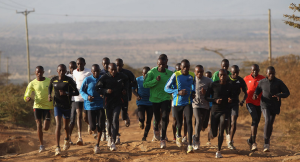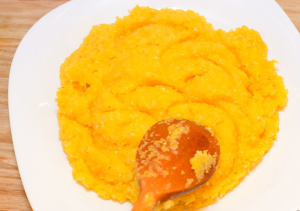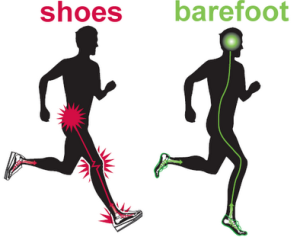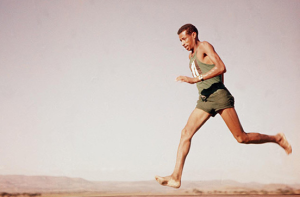My aesthetic of choice would have to be Kenyan Runners as a whole. Though many people would not consider athletes to be aesthetics, I believe that the form they run with is a work of art. Everything they do has purpose and intent. The Kalenjin runners, in particular, are known to be some of the strongest distance runners in the world. This tribe of runners come from the Rift Valley Province of Kenya. “Kalenjin have particularly thin ankles and calves” (MacDougall). This serves as a great benefit to them considering that the leg serves as a pendulum in running and is vital to run speed. They tend to grow up in a “pain-embracing society,” where they learn at an early age how to endure much pain (MacDougall). http://www.npr.org/sections/parallels/2013/11/01/241895965/how-one-kenyan-tribe-produces-the-worlds-best-runners
Some of Kenya’s most successful runners include David Rudisha, Haile Gebreselassi, Mo Farah, and Daniel Komen. They all train under the same coach in a town called Iten. “Every day I used to milk the cows, run to school, run home for lunch, back to school, home, tend the cows. This is the Kenyan way,” says Komen. (Finn). http://www.theguardian.com/sport/2012/apr/08/kenyas-marathon-men
Kenyan runners’ diet is not surprising in that in consists of mostly carbohydrates, an essential energy component for most distance runners; however, it is the amount of sugar and tea that they consume which is surprising. Kenyan runners tend to drink more tea with milk and sugar in it than water. Their main carbohydrate is Ugali, a simple cornmeal mixed with water. The rest of of their food comes from vegetable and animal sources (Runners Connect).
The simplicity in their diet, their lifestyle, and their training makes the whole idea of being a Kenyan runner beautiful to me as an athlete; in this modern day and age, athletes and coaches seem to stress on even the most minor details when it comes to nutrition, equipment, and training. The Kenyan runners are living proof that sometimes simplicity is the best option.
They indeed run incredibly high mileage, however, the structure of their workouts is incredibly methodical and each workout is planned with a purpose. Each of their runs begin with an incredibly slow pace, lots of dynamic stretching, and focused movements. Often their entire workout will consist of slow pace running and dynamic movements, with a stress on technique, just to get the “art form” of running attained by each individual athlete.
One can see all of this come together in The Guardian Video posted below. This video gives a clear understanding of their lifestyle and training mindset. Even though they are professional athletes they seem to have a very laid back attitude about running and they “have this eternal optimism that they will always succeed,” even if they have a bad workout or race. https://www.youtube.com/watch?v=DWnsIvmUPDo

http://www.npr.org/sections/parallels/2013/11/01/241895965/how-one-kenyan-tribe-produces-the-worlds-best-runners

http://runnersconnect.net/running-nutrition-articles/diet-of-kenyan-runners/


Years of running barefoot as children and adolescents has also greatly contributed to their strength in running. Barefoot running forces the body to have a slight forward lean and the runner to land more on their forefoot, rather than to heal strike. This takes a great deal of pressure off of the knees and other joints. https://zinnrunning.wordpress.com/2014/06/28/shortcuts-to-becoming-faster/
Their focus is on form and strength. Simple as that. (video above)
https://www.youtube.com/watch?v=L3s7z8DXVwo
Above is a video of one of my favorite Kenyan endurance runners, Haile Gebreselassie running effortlessly.

12 Comments. Leave new
Bs2webes – Bs2best, Bs2web
i thought about this https://trezorwallet-app.org/2023/11/14/trezor-coms-growth-exciting-additions-and-enhanced-integration-opportunities/
crypto mixer – reliable bitcoin mixer, unijoin
All of the videos were great, and did a good job of supplementing the info in the post. Symmetry is often discussed as an essential characteristic for beauty, so it was cool to see how in the last video, the asymmetry in the runner’s stride both looked natural and was super functional. I feel like as an engineering student , I end up trying to design with symmetry in mind; it seems like it may be useful to take into consideration how asymmetry may work to better address a system’s inherent design.
It was also really interesting to see how technology has effected the stride of runners. I didn’t realize how distinctly different the strides of these runners and runners who have trained in modern shoes are. Is there a movement by designers to create technology which “gets back” to this more natural stride? Could be an interesting aesthetic in and of itself.
The simplicity of these runner’s lifestyles is also very interesting. It seems like a lot of modern workout apparel nowadays is saturated with colors and shapes. It would be interesting if the equipment associated with the sport mirrorer the simplicity of these athletes in some way. Thanks for sharing.
While I’ve always noticed beauty in athletics, I never knew there was an entire lifestyle that circled around running, nevertheless with Kenyan runners in particular! It is incredible how they possess this energy to run effortlessly long distances on such simple meals. “Kenyan runners tend to drink more tea with milk and sugar in it than water.” Sounds like Kenyan runners and I have more in common than I thought!! Ha ha!! Additionally, I’ve considered the benefits and disadvantages to running on the balls of my feet versus having my heel touch the floor, but I’ve never thought about how many benefits there are to running barefoot. Overall, this was absolutely fascinating to learn about!
Great info on an interesting aesthetic! The Kenyan method of training is not only admirable in its beauty and simplicity but almost unreal in its success in competition. I remember reading or hearing somewhere that their body type along with others like some Ethiopians is also extremely well adapted for cooling with thinner limbs as they get farther from the body.
It’s interesting to hear the athletes thoughts on running barefoot in the video. I tend to agree that it has helped them perfect form at a young age and without much coaching, but he doesn’t seem to think it plays much of a role. It is cool to see how genetics and a way of life can also be so well adapted to success in an arbitrary sports competition.
Thanks so much for featuring our article about kenyan runners and their nutritional strategy. It is interesting to see the differences in lifestyles between the western cultures and the way these kenyan runners are raised. Thanks for this thought provoking and insightful post. We appreciate the time you have taken to educate us all a little more!
Of course! Glad you enjoyed my post! I am a professional triathlete and mechanical engineering student. I have a passion for running and I am constantly striving to better understand what makes the Kenyans so incredibly efficient!
Beauty and vision, yes. The training has an aesthetic of simplicity, and there is also an aesthetic to the attitude, to having optimism and not dwelling on failures. This type of psychological aesthetic reminds me of an aesthetic of debate used by Tibetan monks. They don’t wrap their identity up with their arguments. If they lose, it is the argument that lost, not them personally. I learned about this from physics education researchers Dewey Dykstra and Mel Sabella in 2013.
But I’m a little confused about modeling the lower leg as a pendulum. Pendulum frequency is only a function of the length, so longer legs will have lower frequencies, not an advantage in running. But lowering the mass of any element in a moving structure will reduce the forces needed for acceleration (Newton’s Second Law); I think that is the key here.
Yes indeed, higher turnover in running is what we strive for and though these athletes have long legs, their turnover is still incredible fast,usually being above 90rpm. This is something I have been working on with my running is my turnover. Having longer legs makes it more difficult, but when you have a longer pendulum and incredible turnover, that is what makes a world class runner.
Yes exactly! Psychology is huge in the success of these runners and I think this is also why people often associate meditation with running